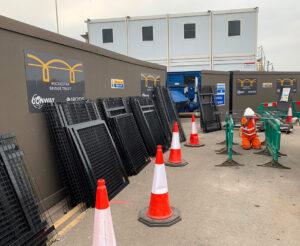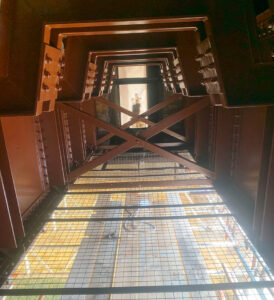The Rochester bridges have a bit of a problem, and it relates to pigeon poo, which is both harmful to humans and to bridges. Here we are going to explain the issue so people can understand why certain works needed to be carried out.
The problem is not the pigeons themselves but their poo – or guano. It is corrosive and if left for even a short time, guano can strip protective paint coating from the steel parts of the bridge. Once that paint is gone rust can begin, leading to a weakening of the material and of the structure of the bridge. Furthermore, guano can damage concrete, brickwork and stone.
As well as dangerous to the bridges, guano can be hazardous to human health as it harbours parasites and spores which are both toxic and a source of disease. Workers coming into contact with guano need to wear personal protective equipment to protect their health.

So why is guano appearing on Rochester’s bridges? Descended from the rock pigeons that naturally roost on sheltered ledges, feral pigeons have adapted their behaviours to find homes in the urban environment. The nooks and crannies in the underdeck of the bridges are particularly appealing sleeping places, and provide potential roosting ledges for hundreds of the birds.
At the start of any maintenance work on the bridges, guano has to be cleaned off all surfaces. This process is expensive and time consuming and has to be very carefully controlled. Workers have to wear bio-hazard suits and protective masks because of the serious potential risks of the airborne dust created.
A huge amount of work has been done underneath the three bridges since the bridge refurbishment project began. These are particularly difficult areas to keep clean, as accessing the underdeck is not an easy thing to. So as each section of repair work is completed, the final job before the scaffolding is removed is to secure the area and prevent feral pigeons being able to roost there.
Some bridge and building owners use netting or anti-roosting spikes to try to protect their structures but these are not always successful and tend to deteriorate quickly over time or need a lot of maintenance attention. The Trust took the decision to install fixed steel mesh instead of netting to ensure the feral pigeons are prevented from returning to the bridges and causing damage in the future.
More than 620 square metres of stiff mesh panels have been installed under the bridges. Each panel is made of 2.5mm thick mild steel wire, galvanised to prevent rusting, with a frame around the panel. The holes in the mesh are 50mm x 50mm (2 inch x 2 inch). There are hinged doors at intervals to allow access for maintenance and inspections. Listed structure consent was needed for the Old Bridge panels, which are powder coated in black to make them as unobtrusive as possible.
The second photo shows an area under the Old Ships’ Passage where the steel has been repaired and painted and the mesh installed.
The deterrent measures have cost more than £110,000. This considerable investment will be worthwhile over the life expectancy of the mesh because it will save money on repeated cleaning and damage that would otherwise be caused by the guano, as well as reducing the health risks to the workforce.




